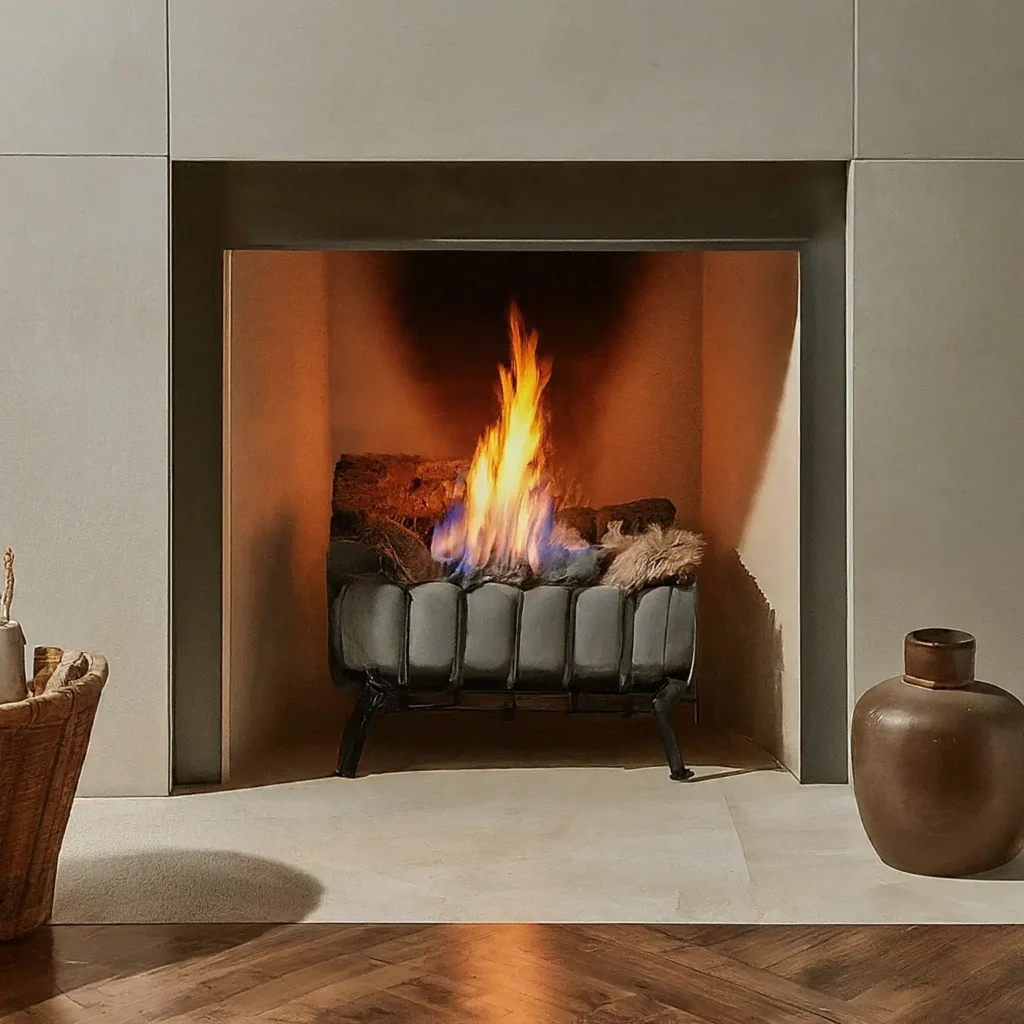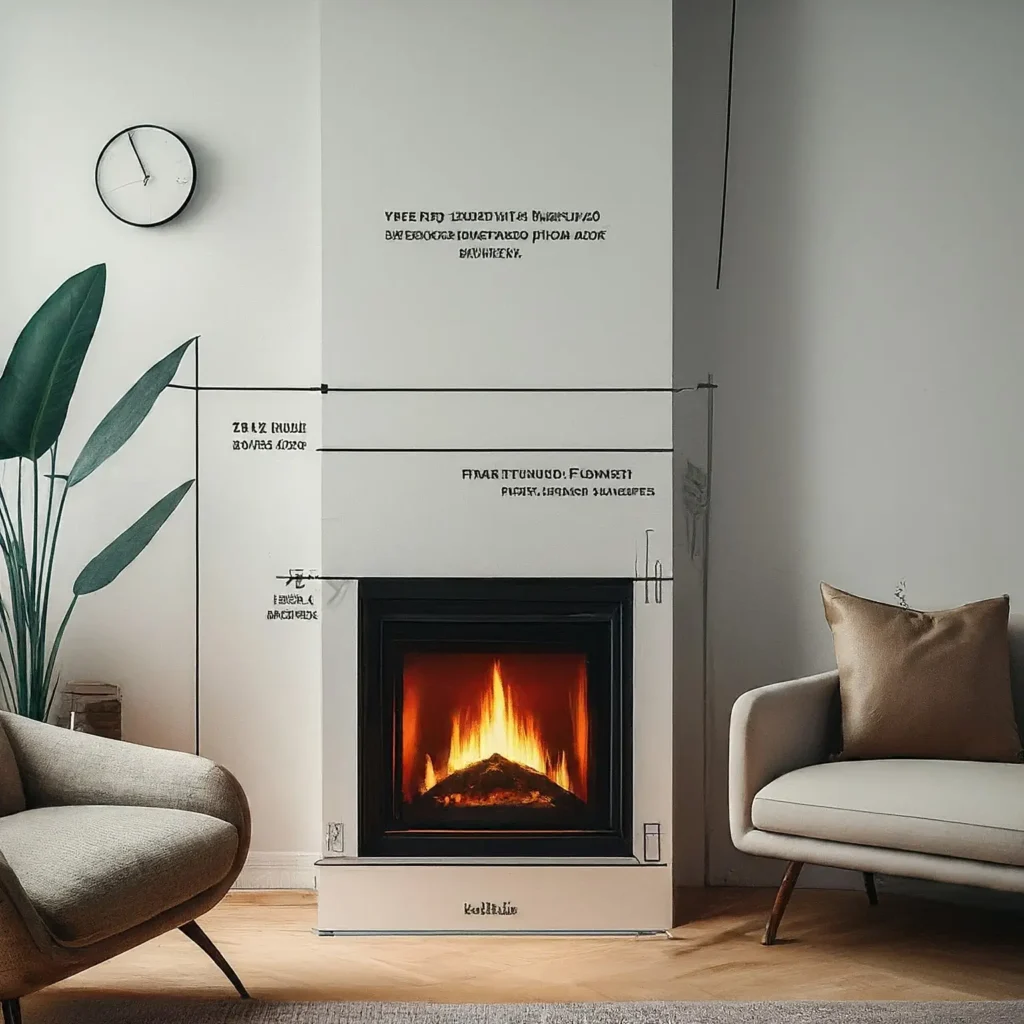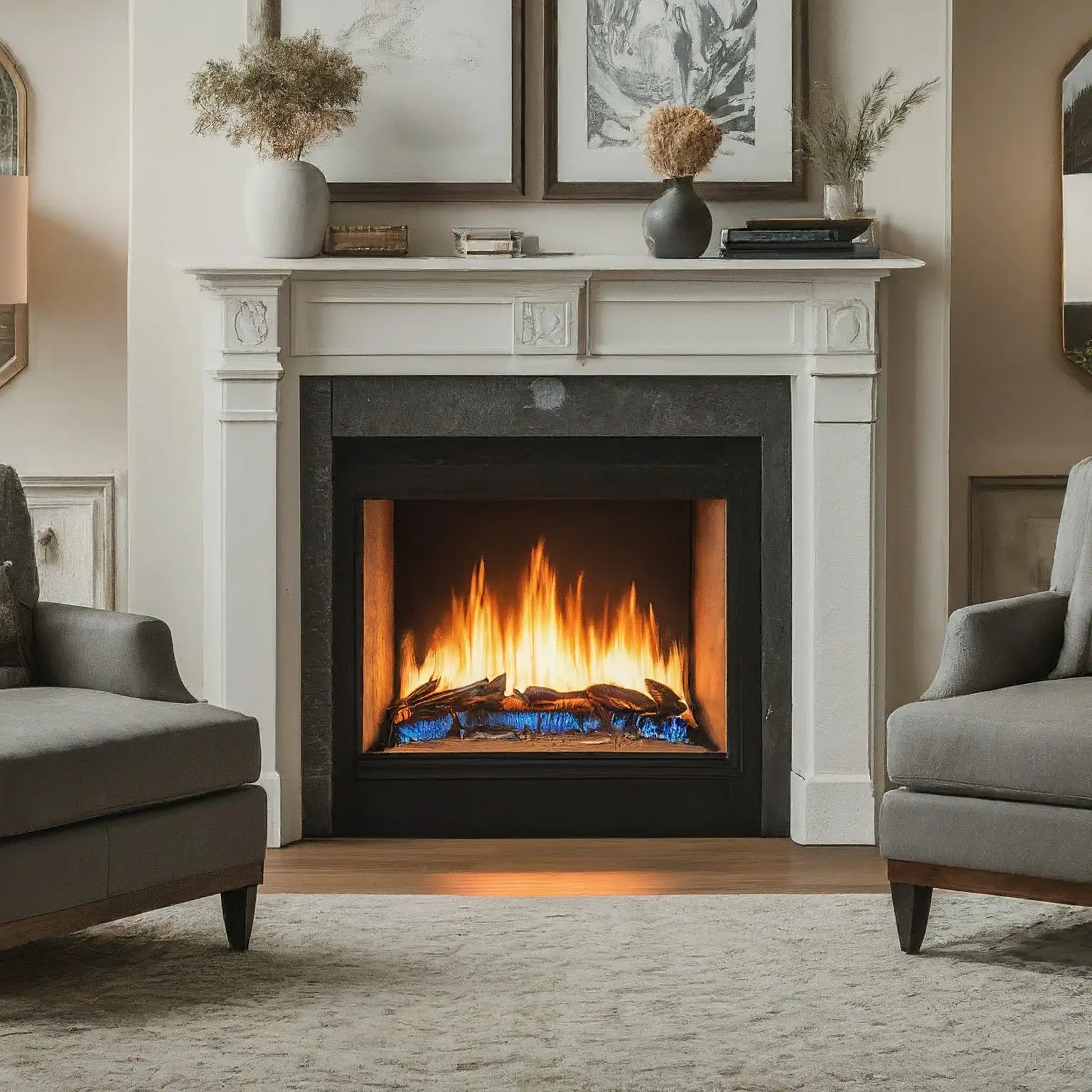Gas fireplaces bring warmth and charm to any living space, providing a cozy atmosphere without the hassle of burning actual wood. However, ensuring safety around a gas fireplace is crucial.
This article will guide you through the recommended clearance distances and other essential safety measures.

Clearance Requirements for Gas Fireplaces:
Gas fireplaces are not only user-friendly but also safer compared to their wood-burning counterparts. They require a designated clearance zone to prevent overheating.
This zone extends six inches (15.24 cm) from the firebox opening and mandates that any combustible materials be kept at least two inches (5.08 cm) away from the external face of the gas fireplace.
In instances where there’s a protrusion of 1/8 inch (0.32 cm) of combustible material around the clearance zone, an additional inch of clearance is necessary. This extra precaution ensures that even minor protrusions don’t pose a fire hazard.
Framing and Hearth Materials:
During the framing of a gas fireplace, it’s imperative to avoid using combustible materials within the recommended clearance zone. This includes both the back surface of the gas fireplace and the flue lining.
Additionally, a non-combustible hearth surface should be installed on the floor directly before the fireplace. This hearth should measure approximately 20 inches (50.8 cm) from the external face of the gas fireplace,
ensuring no combustible materials like carpeting or hardwood flooring are nearby.
Furniture Placement:
A common concern with gas fireplaces is the placement of nearby furniture. While it’s important to maintain a buffer zone of 3 ft (0.91 meters) to prevent any fire hazards, this requirement is relatively forgiving.
Other objects like electronics, power cords, and any potentially flammable items should also be kept at a safe distance of at least 3 ft (0.91 meters) from the gas fireplace.
Do Fireplaces Have To Be on the Outside Wall?:
Traditionally, fireplaces are installed on exterior walls to optimize smoke and heat ventilation. However, this is not an absolute requirement.
Advances in technology and architecture now allow for various types of fireplaces to be installed on interior walls. Opting for a gas fireplace is recommended for interior installations due to their lower ventilation needs compared to
wood-burning alternatives. Nevertheless, it’s essential to enlist a trained professional for proper installation and to clear the surrounding area of any combustible materials.
Framing a Gas Fireplace:
While framing a gas fireplace can be a DIY project for the skilled and confident, it’s crucial to prioritize safety. This process begins with constructing a sturdy base and then building a wooden frame to house the vent and support additional elements like a mantle.
Remember to adhere to all recommended safety measures, including minimum clearance from combustible materials. If in doubt, seeking the expertise of a trained professional is always the safer choice.
Gas Fireplace Safety:
Safety should be paramount when operating a gas fireplace. It’s imperative to have a professional handle the installation,
as different makes and models come with distinct safety features and considerations. Following manufacturer recommendations is crucial for safe operation.
Related: safety for gas fireplace

What Are Zero Clearance Gas Fireplaces?:
For an alternative to traditional gas fireplaces, consider zero-clearance models. These innovative fireplaces use specific materials and designs to regulate surrounding temperatures,
eliminating the need for a hearth. They can be placed in various locations within a home without necessitating clearance of flammable materials from interior or exterior parts.
Zero-clearance fireplaces are available from reputable retailers like Fireplaces Direct, Home Depot, Wayfair, and more.
Final Thoughts:
Maintaining a minimum clearance of 3 ft (0.91 m) around a gas fireplace is essential for fire safety. Additionally, using non-combustible materials for framing and hearth construction ensures a warm and secure fireplace experience.
With proper installation and adherence to safety measures, you can relish the warmth and comfort of your gas fireplace worry-free.


